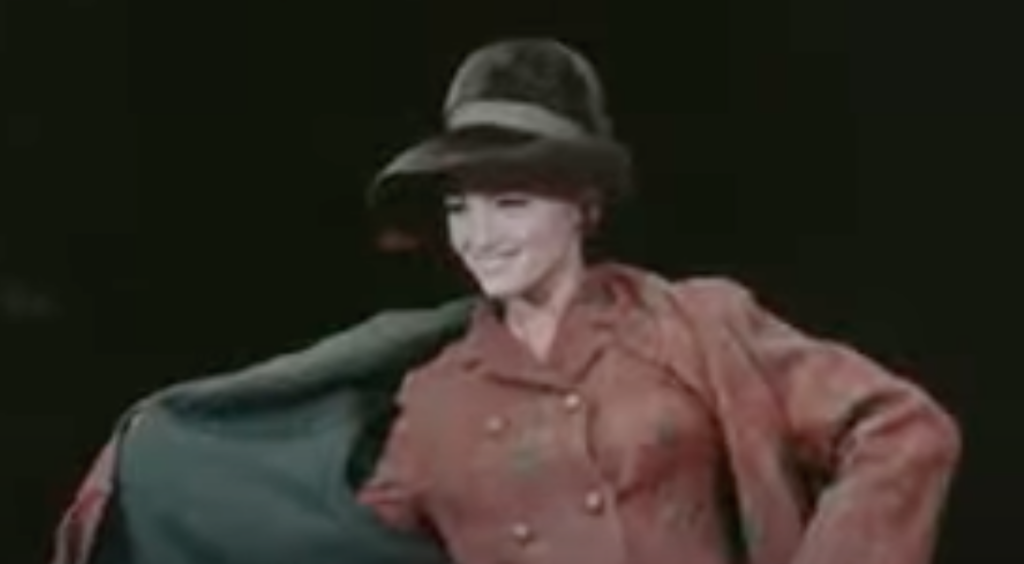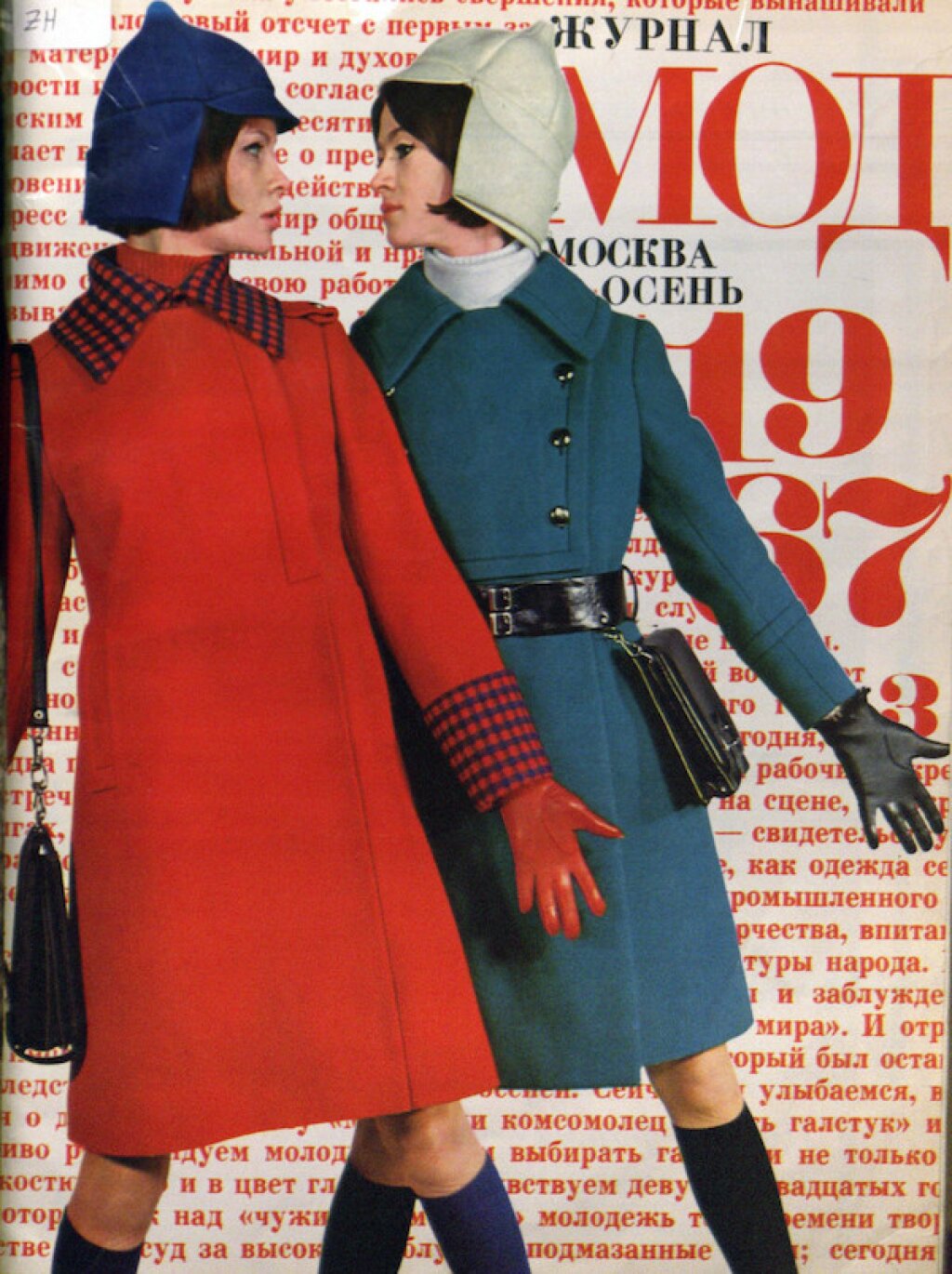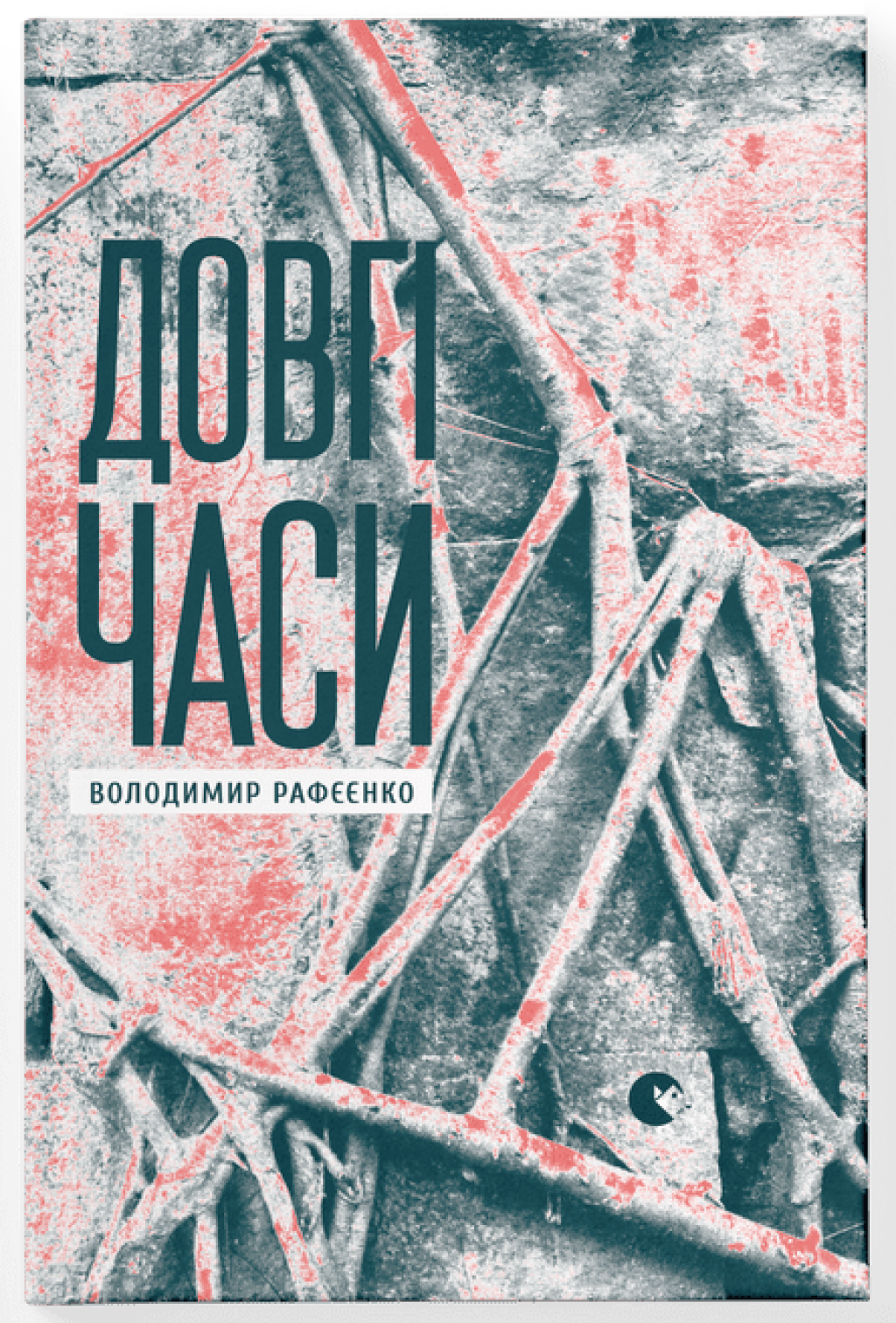Above: A model on the catwalk at Moscow's 1967 Festival of Fashions. Source: YouTube.
Virginia Olmsted McGraw is a Visiting Assistant Professor in the Department of History at Colby College. She is currently working on her book project, Soviet by Design: Forming an International Fashion Industry during Late Socialism.
During the 1950s and early 1960s, Soviet clothing specialists knew that their designs paled in comparison with Paris, London, or New York fashions. During the Brezhnev era, however, the emergence of elite Soviet designers, particularly Viacheslav (Slava) Zaitsev, inspired new confidence. Yet this period also brought to light the difficulty of maintaining a unique, socialist style while seeking approbation from a Western, capitalist audience.
Soviet willingness to invite direct comparison with Western fashion reached its peak during preparations for the fiftieth anniversary of the October Revolution in 1967. The spectacular Festival of Fashions took place at the Luzhniki Palace of Sports, running for two weeks at the end of August. The presence of Soviet designers on such an international stage led to the rise of Soviet “couture,” a category of un-mass-producible, visually striking designs intended solely for major domestic and international exhibitions. Since the capacity for mass (re)production was ostensibly a central tenet of Soviet design, these exhibitions undercut the state's putative commitment to consumer needs and ruffled the feathers of old-guard designers.
As designers Iren Andreeva and Alexander Igmand noted in their memoirs, the festival boasted three shows a day, each filling the Palace of Sports with almost 10,000 spectators. The event drew representatives from fashion houses around the world, with the collections of the French Houses of Chanel, Cardin, Nina Ricci, and Yves Saint Laurent attracting huge Soviet crowds. In contrast to the better-known Christian Dior show of 1959, the Festival of Fashions represented a public display of international fashion, providing Muscovites with a vision of not just one, but a multitude of couture and ready-to-wear collections.
Paris, and the House of Dior in particular, formed a central part of the identity of the centralized fashion bureau ODMO (Obshchesoyuznyi dom modelei odezhdy), the All-Union House of Prototypes. Accordingly, designers not only looked to Parisian fashion houses for inspiration, but also celebrated their impact on Soviet design. Soviet designers saw Cardin’s futuristic collection as a tribute to the Soviet space program, while Chanel’s designs fit within the “rationalist ideals” of ODMO designers.
The ODMO took the festival as an opportunity to exhibit its anniversary collection from the 1967 Montreal World’s Fair, which had not yet been displayed in Moscow. The Chicago Defender reported on January 4, 1967 that this 120-item collection, developed under Zaitsev’s leadership, celebrated the October Revolution, featuring revolution-themed designs, mini-skirts, and ample use of red, “reflecting the heroic past and present of the Soviet people.”
The fall 1967 edition of Zhurnal mod (the Magazine of Fashions) depicts samples from the collection: two designs with fitted wool coats and budyonovki, the hat associated with Red Army uniforms during the Soviet Civil War. In addition to the historical homage, these designs also reflected contemporary fashion trends, with short skirts and bright colors.
Zhurnal mod
, no. 3 (1967): cover.While the French collections received approval from all quarters, Soviet art and fashion critics disparaged the rest of the event. Art critic V. Kriuchkova quipped in Dekorativnoe iskusstvo SSSR in February 1968: “The diversity of the collections and the variety of themes displayed by participants meant that the only unifying principle was spectacle (unless it was bad stage direction, the poor performance of the models, and the low literary merit of the descriptions and commentary).” Her negative opinion of the festival came from its emphasis on high fashion, the lack of mass-produced designs, and her poor opinion of the American show.
Indeed, the Americans bore the brunt of Kriuchkova’s ire. She derided their show as “boisterous,” “vulgar,” and “more reminiscent of a circus than art,” concluding: “The American character was apparent in all the bustling gaudiness, the aggressive assertiveness and dynamism, the spontaneity bordering on shamelessness, and the almost childish thirst for surprises and sensation.”
Kriuchkova also criticized the lack of mass-producible looks in the Soviet anniversary collection and the emphasis on “stylized,” nationally inspired looks, which in her view rendered the clothing impractical and unappealing to ordinary people. Her comments on Chanel's collection, by contrast, were quite positive because their show “lacked theatricality and figurative analogies from other eras.” A direct criticism of the Soviet collection, this statement reflects the conflict between the style of Soviet design of the late 1950s and early 1960s—which further simplified the classic lines of Dior and Chanel’s designs—and the new direction in evidence in the 1967 festival.
This new style was difficult to mass produce and did not appeal to consumers. In the January 1971 edition of Dekorativnoe iskusstvo SSSR, the designer Alla Levashova lamented:
Looking through the drawings and photographs from the International Festival of Fashion in 1967, we regret to note that not a single design from the Soviet collection served as a reference for inspiration, not one idea was picked up and developed for mass production or on the streets. Meanwhile the English designs, and Chanel’s styling received broad circulation both in Europe, and in our own country, proving to be more no-nonsense and representative of the working part of the population.
Designers were caught between the conservatism of Soviet design and the desire to compete among artistic couturiers, ultimately achieving neither in their efforts to succeed at both.
1967 remained the first and only time that Soviet designers shared a stage with their Western counterparts in Moscow, although they would exhibit internationally many times over the next twenty years. While Soviet designers and fashion correspondents could find plenty to dislike in the American exhibition, they did not take the opportunity to declare the Festival of Fashions a Soviet victory. Praise for the French and British collections, which contrast sharply with jabs at the failures of Soviet design, points to the limits of generosity within Cold-War rhetoric.
The failure of Soviet design at the Festival of Fashions in Moscow was not the result of insufficient designer talent, nor did it proceed from the low quality of Soviet textile and clothing production. Instead, it emerged from the disconnect between the promise of a new “socialist” fashion intended for the working class and the unrealizable and inaccessible clothing featured on the catwalk, which was manifestly intended for the stage rather than the store.
Ultimately, the British and French designers better captured the needs of the local audience by presenting clothing that Soviet consumers could imagine wearing. Large international shows such as the Festival of Fashions further shifted the ODMO’s focus toward designs inaccessible to the average Soviet woman. While this reorientation increased the profile of Soviet fashion internationally, it widened the gulf between promises made in the pages of fashion magazines and the goods stores were able to deliver.




